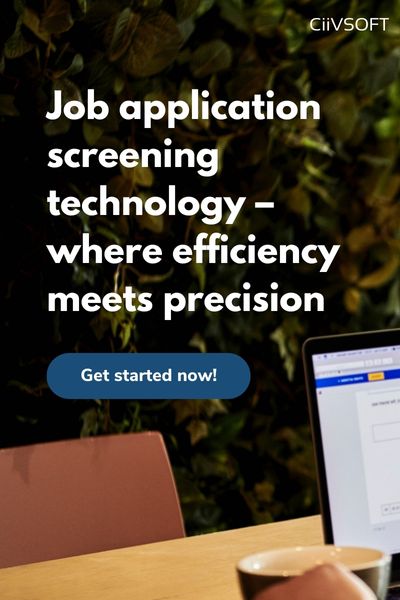In today’s competitive job market, finding the right candidates for open positions can be a daunting task for employers. With hundreds of resumes flooding in for each job posting, it can be overwhelming and time-consuming to review each one thoroughly. This is where candidate screening tools come into play.
Candidate screening tools are software or technologies used by employers to streamline the recruitment process and identify the most qualified candidates efficiently. These tools can range from applicant tracking systems (ATS) that automatically sort through resumes to pre-employment assessments that assess a candidate’s skills and qualifications. While these tools offer several benefits, such as time-saving and objective screening, they also have potential drawbacks, including the risk of bias and lack of human touch.
In this blog post, we will take a critical look at the pros and cons of candidate screening tools and explore how they impact the hiring process.
Pros
1. Time-saving
One of the biggest advantages of candidate screening tools is their ability to save time for employers. ATS software can automatically sort through resumes, screen for keywords, and identify qualified candidates based on predefined criteria. This can significantly reduce the time spent reviewing resumes manually, allowing HR professionals to focus on other aspects of the recruitment process.
2. Objective screening
Another benefit of using candidate screening tools is the potential to reduce bias in the hiring process. Traditional recruitment methods may be prone to unconscious bias, such as favoring candidates with similar backgrounds or characteristics. Screening tools can provide an objective assessment of candidates based on their qualifications and skills, reducing the impact of bias in decision-making.

3. Improved efficiency
Candidate screening tools can streamline the recruitment process and make it more efficient. From automated scheduling of interviews to online assessments, these tools can help employers quickly identify qualified candidates and move them through the hiring process faster. This can result in a shorter time-to-hire and ultimately help companies secure top talent before their competitors.
Cons
1. Potential for bias
While candidate screening tools can help reduce bias, they are not immune to bias themselves. ATS software, for example, relies on predefined criteria that may not always capture the full range of qualifications or skills a candidate possesses. This can lead to overlooking qualified candidates who do not match the predefined criteria, resulting in potential bias against candidates from diverse backgrounds.
2. Lack of human touch
Another downside of candidate screening tools is the lack of human interaction in the early stages of the recruitment process. Many screening tools rely on automated processes, which may lack the personal touch of human interaction. Candidates may feel disconnected or frustrated with a purely automated process, potentially resulting in a negative candidate experience and deterring top talent from pursuing opportunities with the company.
3. Cost considerations
Implementing candidate screening tools can come with significant costs, including initial setup fees, ongoing maintenance fees, and subscription costs. For smaller companies or organizations with limited budgets, the cost of implementing and maintaining these tools may outweigh the benefits in terms of time and efficiency savings.
How To Strike the Right Balance: Using Candidate Screening Tools Effectively in Today’s Hiring Landscape
Candidate screening tools offer numerous benefits, including time-saving, objective screening, and improved efficiency in the recruitment process. They can help streamline the hiring process and reduce bias, leading to more effective and efficient talent acquisition. However, it is essential to be aware of the potential downsides, such as the risk of bias in the tool’s criteria, lack of human touch, and cost considerations.
To ensure a fair and effective recruitment process, it is crucial to use candidate screening tools judiciously, complemented with human judgment and a commitment to diversity and inclusion. Striking the right balance between automation and human interaction can result in a more successful and inclusive recruitment process, ultimately leading to the hiring of top-quality talent.
We’ve rounded up our top 10 favorite screening tools. Find them in this blog: The 10 Best Job Application Screening Tools








